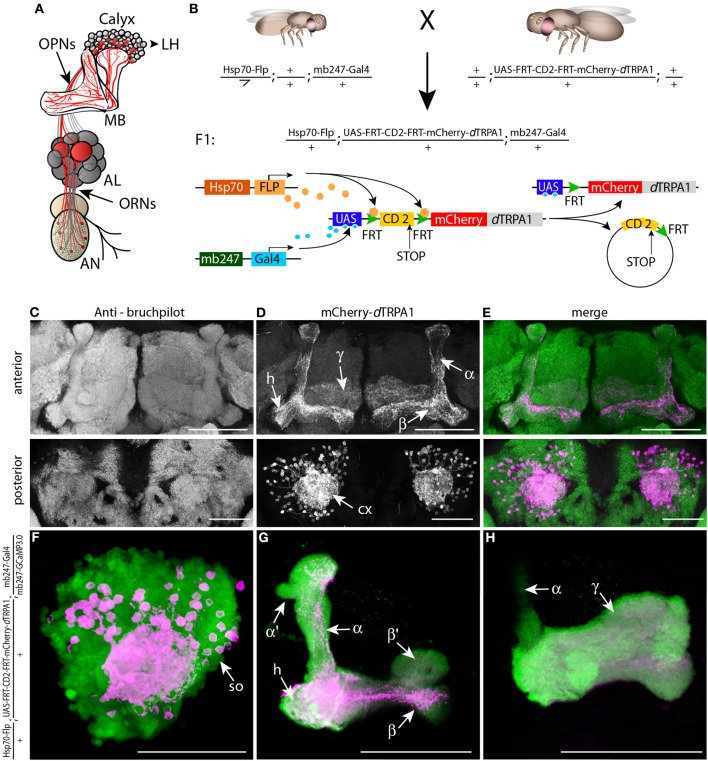Figure 1.
mCherry-dTRPA1 expression in random ensembles of Kenyon cells. (A) Illustration of the olfactory input to mushroom bodies in the Drosophila brain. Olfactory receptor neurons (ORNs) transmit odor information from the antennae (AN) to the antennal lobes (AL). Olfactory projection neurons (OPNs) connect the AL with the mushroom bodies (MB) at the calyx and the lateral horn (LH). (B) Principle of mCherry-dTRPA1 expression: a fly strain that carries the mushroom body-specific mb247-Gal4 DNA construct and a flippase DNA construct under control of a Hsp70 promoter is crossed to a fly strain that carries the mCherry-dTRPA1 DNA construct preceded by a FRT-flanked CD2(stop) cassette under UAS control. A flippase-mediated random excision of the FRT-cassette causes transcription of the mCherry-dTRPA1 construct. (C–E) Expression of mCherry-dTRPA1 in random ensembles of Kenyon cells. Upper panel anterior view, lower panel posterior view on a brain of a fly subjected to a 1 h heat shock 1 day after eclosion. Neuropils are visualized using the anti bruchpilot-antibody (C), mCherry-dTRPA1 expression is visualized using an anti-RFP antibody (D), and the overlay of both is shown in (E). Scale bars = 50 μm. (F–H) Magnified illustration of the expression of mCherry-dTRPA1 in random ensembles of Kenyon cells visualized in magenta at the level of the somata (so). A large proportion of Kenyon cells express G-CamP3.0 as a fluorescence marker (green). (F) Kenyon cell axons that express mCherry-dTRPA1 and that project to the heel (h), the α- and β-lobes (G) and the γ-lobes (H). Scale bars = 50 μm.

